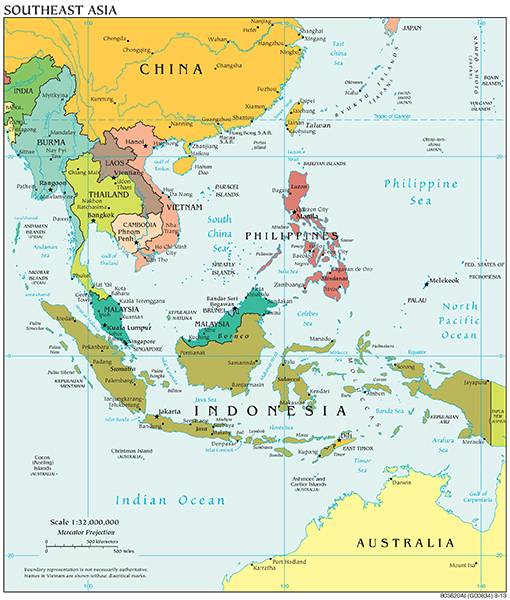Southeast Asia
A World Transformed: The Geography of Southeast Asia
Welcome to the free online learning unit developed by the Texas Alliance for Geographic Education to assist teachers in providing a rigorous level of instruction on geographic concepts to high school students. The learning unit takes a regional approach to emphasize similarities and differences within Southeast Asia. The geographic lens seeks to ask and answer why things are where they are. This unit uses this lens to explain and understand the role of Southeast Asia in the world. Although this unit is focused regionally on Southeast Asia, content is provided within six geographic modules - physical geography, culture and religion, economic geography, environmental degradation, climate change and impact, and globalization. Each module is supported with background information, videos, and instructional materials.
Introduction to Southeast Asia
Southeast Asia is a complex and fascinating region. Understanding its people, environment, economy, and cultures puts its history and current events into context for not only the region but its place in the world. As a region, it is fragmented into numerous peninsula and islands with a current population of over 600 million. The region’s land area is about half that of the contiguous United States, but it is home to incredible diversity.
Southeast Asia has been easily accessible to ocean trade and cultural influence from outside the region. Traders and teachers brought a variety of religions and cultural influences that have blended together over the centuries. Trade ships traveled with the monsoon winds into the region and took Southeast Asia produce and animals to other parts of the world. It also bought colonialism from other parts of Asia, Europe, and the United States. These former colonizers are now major markets for the region’s products.
Given Southeast Asia’s relatively small land area and rising levels of consumer demand, population pressure on land, soil, water, and forest resources are public issues with which the region is dealing. Much success in the region is based on the emergence of growth triangles or economic zones to take advantage of location, low-cost manufacturing, and connections with the global economy. At the same time, the global market for the region’s natural resources, such as teak, minerals, palm oil, result in unsustainable practices, including slash and burn agriculture and strip-mining, that decrease the region’s biodiversity.
But Southeast Asia is also a place of cultural complexity. It is home to global-cities and emerging markets while still holding onto a significant rural population. Hundreds of languages are spoken in the region and all major religions are represented in the region. Indonesia’s motto "Unity in Diversity," may appropriately describe the whole region.
This unit explores Southeast Asia's geography with content information for the teacher and downloadable resources for use in the classroom.
Units
This project is funded in part by a grant from the National Geographic Society Education Foundation.

